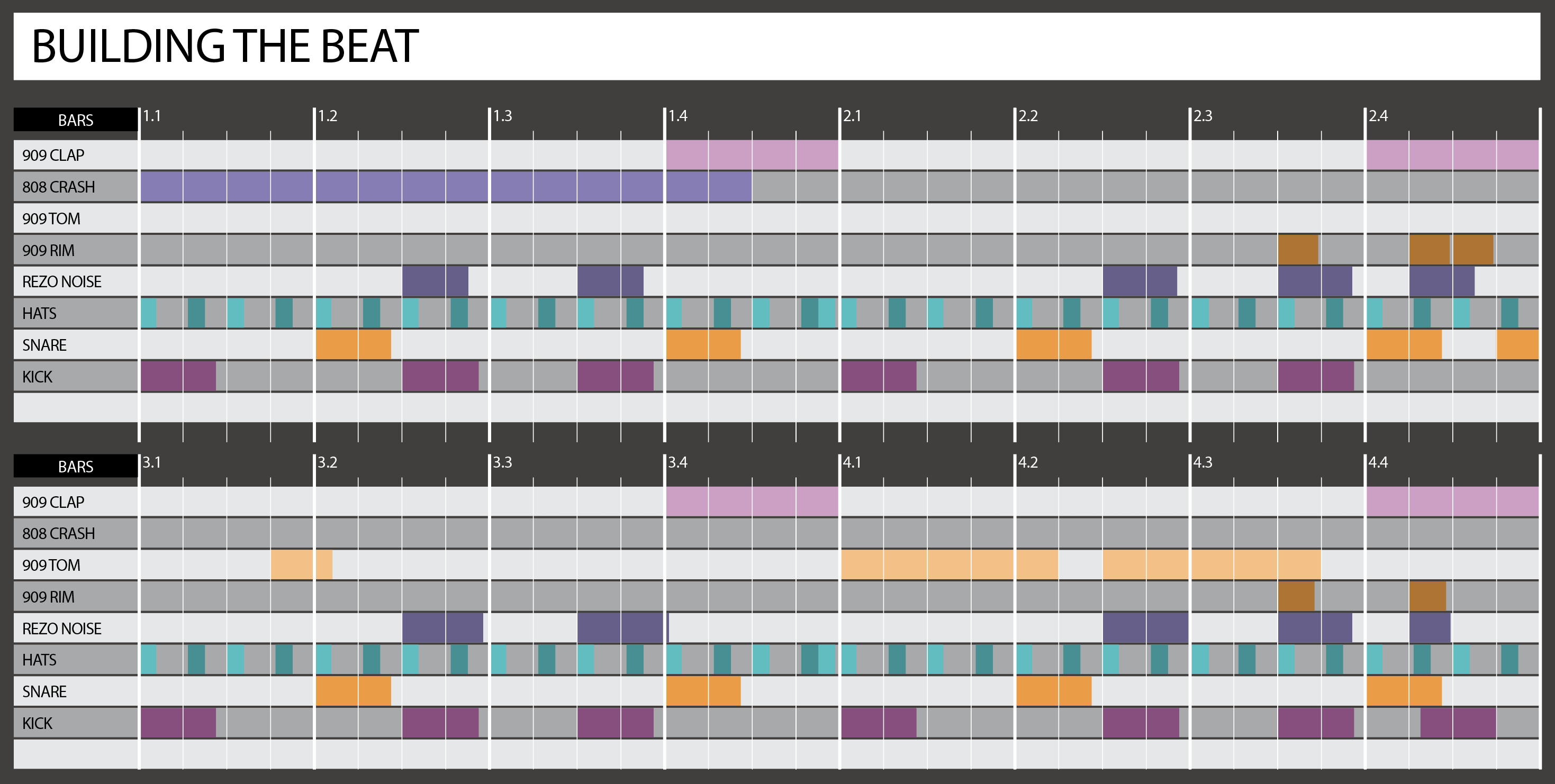Beat Building: how to make an old school electro beat
In our Beat Building series, we teach you how to craft drum patterns in a variety of genres and styles. Next up, it's electro

In our Beat Building series, we're showing you how to produce beats, grooves and drum patterns in a variety of styles and genres, touching on various eras of production, to help you understand the key rhythmic elements behind many of today’s biggest tracks.
Not to be confused with electro house, which is a four-to-the-floor derivative, classic electro (sometimes called electro funk) developed in the early 1980s in parallel with hip-hop.
Producers such as Arthur Baker and artists such as Cybotron were heavily influenced by both early hip hop and German pioneers Kraftwerk to create a hybrid genre that was both funky and techy.
Rhythmically the core beat works around a traditional alternating kick and snare pattern
Despite having been around for ages, classic electro continues to re-emerge and reinvent itself with labels such as Transparent Sound and Underground Resistance and DJ/artists such as Helena Hauff all flying the classic electro flag in one way or another.
Rhythmically the core beat works around a traditional alternating kick and snare pattern and thus has more in common with breakbeat and hip-hop than it does with house.
From a production perspective electro can be highly creative and although the sound set is typically rooted in the analogue sounds of classic drum machines, there’s plenty of room for use of effects such as reverb, saturation and modulation to make the sounds your own.
Although tempos are typically around 130bpm you’ll find electro at a wide range of tempos, including pretty fast, giving you the freedom to take it where you want.
Get the MusicRadar Newsletter
Want all the hottest music and gear news, reviews, deals, features and more, direct to your inbox? Sign up here.
Building the beat...

Classic electro features alternating KICK and SNARE parts, with the movement primarily coming from the kick pattern. Here in bars 1 and 2 the kick falls o+n the downbeat and then 7/16 and 11/16 of each bar. The snare meanwhile falls straight on beats 2 and 4.
We’ve duplicated the core pattern for bars 3 and 4. This simple combination can then be enhanced with additional kicks or snares for feel. We’ve added a snare on 16/16 of bar 2 and also a kick on 14/16 of bar 4.
The snare is straight quantised, but the kick has 16ths swing quantise set to about 50% and is slightly behind the beat. Both our kick and snare have a nice short slappy reverb to create a more industrial and retro vibe.
The HI-HAT pattern is mainly 16ths with alternating high/low velocity and 16ths swing quantise (about 50%). We’ve also added an extra hat on the last 32nd of bars 1 and 3. Next, try accenting the core pattern – we’ve added a 909 CLAP to every other snare. Further emphasis comes from a zappy resonant noise sound (REZO NOISE), which doubles up with some of the kicks.
We’ve also added 909 TOMS on 1/16 and 6/16 of bar 4, and a reverb heavy 909 RIM sound either side of beat 4 in bars 2 and 4. Positioning the additional percussion sounds is really up to you, so get creative. Rounding things off is a CRASH on bar 1 beat 1. We’ve used a metallic 808 style sound and processed it heavily with a phaser.
Classic electro is peppered with recognisable retro sounds and adding these can easily take things to the next level. Examples include sample and hold pitched synth bleeps, classic acid style Roland TB-303 basslines or early orchestra strikes. Work the sounds with reverbs and delays for a retro vibe.
Get started on building an electro beat with these free samples:


Future Music is the number one magazine for today's producers. Packed with technique and technology we'll help you make great new music. All-access artist interviews, in-depth gear reviews, essential production tutorials and much more. Every marvellous monthly edition features reliable reviews of the latest and greatest hardware and software technology and techniques, unparalleled advice, in-depth interviews, sensational free samples and so much more to improve the experience and outcome of your music-making.
"If I wasn't recording albums every month, multiple albums, and I wasn't playing on everyone's songs, I wouldn't need any of this”: Travis Barker reveals his production tricks and gear in a new studio tour
“My management and agent have always tried to cover my back on the road”: Neil Young just axed premium gig tickets following advice from The Cure’s Robert Smith










